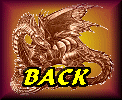Last Updated January 30, 1999
-2:29 am mst
Sign
the Guestbook

 International Kenpo Karate
Organization
"Instructor
Tips"
International Kenpo Karate
Organization
"Instructor
Tips"

 Watch
Concept
Watch
Concept  Part I
.
The Watch Concept is based upon the mechanics of a fine Swiss
Watch. There are several gears in the watch, some are utilized for
the hour hand, another for the minute hand, yet another for the second
hand, and still others for the month, the day of the week, the date,
the year, and depending upon the sophistication of the time piece many
more gears for many other uses.
Part I
.
The Watch Concept is based upon the mechanics of a fine Swiss
Watch. There are several gears in the watch, some are utilized for
the hour hand, another for the minute hand, yet another for the second
hand, and still others for the month, the day of the week, the date,
the year, and depending upon the sophistication of the time piece many
more gears for many other uses.
A unique
feature, is to examine the way in which the gears "rotate", regardless
of the number of gears in a watch, there are only two (2) options
as to the direction they rotate .... clockwise or counter clockwise.
The gears may be of various sizes {for different functions} as well as
having differing numbers of "teeth" on each wheel. This of course,
will vary the speed of each wheel, which will in effect, create a different
result due to the timing of the particular gear.
The
size of the gearing is also to be examined, small gears with few teeth
give a different timing than that of the same size gear with many teeth.
As we realize, there are several gears of varying sizes, each with
differing numbers of teeth that must work harmoniously which results in
an accurate and sophisticated timepiece.
If
we examine ourselves, the human body functions much the same as the watch.
As an example, lets look at a straight right punch. Starting with
the right hand chambered at or about the hip, palm up, as we deliver the
punch forward we see that it rotates counter clockwise at which it ends
up palm down at its final position. There are many variations which
differ in the regulation on exactly when the "punch" starts
making its rotation (some when the mid forearm reaches the ribs, another
when the elbow reaches the ribs etc.) however, most agree that the proper
completion of the punches rotation, is just prior to the extension of the
arm ending with the palm down. As we examine this action we see several
"gears" working. The upper portion of the arm (shoulder to elbow)
is -from the practitioners point of view- moving in a clockwise direction,
the mid portion of the arm (elbow to wrist) however, is as it extends,
going counter clockwise, and at the same time is also rotating (palm up
to palm down). This action as you see only involves "two" gears,
upper arm and mid arm, the wrist should be locked for this action.
If you were to "throw" a right punch say from a left neutral bow ending
in a forward bow, you would additionally involve more gears, i.e. the body,
which would rotate: counter clockwise, the forward leg which would
involve upper leg, lower leg and foot (3 gears), the opposite arm (2 gears),
rear leg (extending- 3 gears) etc., As we study and break down the mechanics
of this action we find we find that the body movements in one smooth action
are all working together harmoniously to achieve the goal which is the
punch. Further scrutiny from this perspective shows that only 2 movements
are present (clockwise and counter clockwise), if fact, if you study any
movement or combinations of movements you will find the same results.
To make improvements on any such actions, either the instructor or the
practitioner must be observant and knowledgeable of motion to correct inappropriate
movements or (tuning of the watch if you will). When your movement
is not smooth or you cannot deliver the action (say a punch, chop or kick)
or even a complete self defense technique in the manner in which you or
your instructor would like, you might need to isolate this concept and
really study your individual actions to find clues to better execution.
If
the watch has a gear installed that is the wrong size or has a flaw, you
cannot expect harmonious movement. Usually this is detected at the
manufacturer by a quality control agent. In our studios the instructor
has the task of isolating these flaws and helping the student towards progress.
Human movement however is not so easily fixed or located as a flawed gear
in a watch which can be replaced in seconds. Often times many repetitions
are needed just to recognize the exact area of deficiency and then prescribe
a cure (usually drills designed to hone the action to perfection).
Remember,
Mr. Parker stated: " While there is a difference between the terms "opposite"
and "reverse" both provide answers to thoroughly understanding the
"effects" of motion".
Dennis Conatser AP
Life Kenpo Student
01/99
Copyright © 1999
All rights reserved.


 Copyright © 1998, 1999 International
Kenpo Karate Organization
All rights reserved.
Have questions or comments regarding this
site?
Send them to the:
WebDragon
Copyright © 1998, 1999 International
Kenpo Karate Organization
All rights reserved.
Have questions or comments regarding this
site?
Send them to the:
WebDragon
 Watch
Concept
Watch
Concept 

